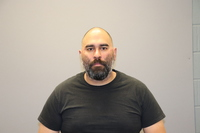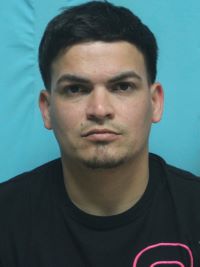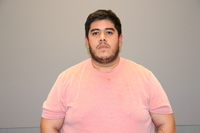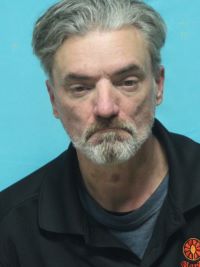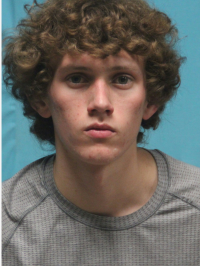December 16, 2016
A Hero from Colleyville……
On December 16, 2016, CDR Snodgrass, who is a native of Colleyville, Texas, will be relieved of Command of VFA-195 by CDR Ryan S. Jackson in a Change of Command Ceremony in Japan.
Dambusters Conduct Change of Command
NAVAL AIR FACILITY ATSUGI (NAFA), Japan (NNS) –Cmdr. Ryan S. Jackson assumed command of the “Dambusters” of Strike Fighter Squadron (VFA) 195 from Cmdr. Guy M. Snodgrass at Naval Air Facility Atsugi (NAFA), Japan, Dec. 16.
Rich in naval tradition, the change of command signifies the formal passing of responsibility, authority, and accountability of command from one officer to another. In the presence of his family and friends, Snodgrass addressed the Dambusters for the final time prior to stepping aside as the Commanding Officer.
“It’s an honor to stand before you and receive the opportunity to lead more than 200 of the Navy’s finest men and women in continuing a legacy of warfighting excellence that has spanned more than 73 years and across five major conflicts in our nation’s history,” said CDR Jackson.
A native of Dallas, Texas, Cmdr. Ryan Jackson graduated from The University of Texas at Austin in 1998, earning a Bachelor of Science in Mechanical Engineering. Jackson was commissioned through Officer Candidate School at Naval Air Station Pensacola, Fla, and reported for flight training in April 2000. Jackson reported as the Executive Officer of VFA-195 in 2015. Jackson has accumulated more than 2,400 flight hours and 525 carrier arrested landings, including 31 combat missions. His awards include the Meritorious Service Medal, Strike/Flight Air Medal, Navy Commendation Medal (4 awards), Navy and Marine Corps Achievement Medal, and various service awards and ribbons.
 —Lieutenant Commander Guy M. Snodgrass is one of the best pilots in the U.S. Navy. The battle-tested pilot has also trained elite Top Gun pilots.
—Lieutenant Commander Guy M. Snodgrass is one of the best pilots in the U.S. Navy. The battle-tested pilot has also trained elite Top Gun pilots.During his sixteen months at the helm, Snodgrass successfully navigated the Dambusters through a demanding schedule and continual requirement for combat readiness as part of the Forward Deployed Naval Force. The Dambusters completed three Western Pacific Patrols, one of which included the historical hull swap from the USS George Washington (CVN 73) to the USS Ronald Reagan (CVN 76), and two training detachments to improve pilot’s tactical proficiency. Under Snodgrass’ guidance, the squadron also participated in four joint exercises, Valiant Shield, Talisman Saber, and Annual Exercise to provide experiences in fighter integration.

Snodgrass instituted the cultural exchange and tactical integration exercise “Benkyoukai I”, “II”, and “III” with the Japan Air Self-Defense Force (JASDF) 7th Wing, including multi-plane events with F-4EJ, F-15J, E-2C, and Japanese ground controllers, forging a lasting partnership with the 302nd Tactical Fighter Squadron along the way. He also created and led U.S. Pacific Fleet’s Pacific Warfighter Symposium, providing an opportunity for frontline commanders to discuss how best to advance Indo-Asia-Pacific regional maritime security while broadening operational perspectives across aviation, surface, submarine, and SEAL leadership.
The Dambusters were the only Navy and Marine Corps aviation squadron to receive the Secretary of the Navy Safety Excellence award for fiscal year 2015, demonstrating the squadron’s culture of safety excellence and mission accomplishment, and produced the best results across all commands in Naval Aviation during the 2016 Commander, Naval Air Forces Aviation Maintenance Inspection.
Snodgrass has logged more than 2,784 total flight hours, 2,390 F/A-18 flight hours, and 719 carrier landings. His next assignment is to serve as Assistant Chief of Staff for Training and Readiness for Commander, Naval Air Force Atlantic in Norfolk, Virginia.
More on Colleyville’s Commander Snodgrass from a published article in March 20, 2012
Mission impossible? Not for Lieutenant Commander Guy M. Snodgrass. The experienced pilot looks out from the cockpit of his F/A-18E at the tiny dot bobbing way down on the Yellow Sea. With one eye, he checks the diagnostic data of the plane’s flight systems that constantly run across three screens.
His plane, a “Super Hornet,” is a fighter jet equipped with cutting-edge computer technology – and yet, at this moment almost everything depends on this pilot’s skill and his absolute mastery of the fifty-five million dollar flying machine at his hand. What from high above looks like a piece of driftwood floating in the endless seas is in reality the U.S.S. George Washington, a Nimitz-class aircraft carrier of more than 97,000 tons displacement. It is a behemoth 332 meters (1,090 feet) long and 76 meters (250 feet) wide, powered by two nuclear reactors. If all works out well, that’s where Snodgrass plans to land shortly. As he already has more than four hundred times in his aviation career.
Lieutenant Commander Guy Snodgrass is one of the best pilots in the American Naval Armed Forces, highly decorated with both the Navy Commendation Medal and the Navy and Marine Corps Achievement Medal. His career has been illustrious: from active duty, he was promoted to instructor at the Naval Strike and Air Warfare Center in Fallon, Nevada, home of the legendary Top Gun pilots. As an “Air-to-Air Mission Planning Subject Matter Expert” he had significant impact on the development of the aerial tactics for the U.S. Navy and the Marine Corps. Snodgrass is an ace in every respect, with only a very few pilots coming even close to his abilities and achievements.
One may wonder – does it ever become routine? No, that’s not what landing on a floating air base can ever be, not even to a highly skilled professional like Guy Snodgrass. Even though, as he later admits with a smile, “the pulse frequency and adrenaline levels don’t quite shoot up like they used to in the early days of my flying,” he knows that his daily maneuvers are still the stuff of dreams. At the close of a flight, Snodgrass pulls the F/A-18E downwards and circles around the aircraft carrier, so he can lose both elevation and speed. Meanwhile, the four arresting wires on the aft flight deck are being set to the current landing weight of the incoming fighter jet. Ideally, Snodgrass will touch down so he can snag the third wire with his plane’s tail hook.
When the final approach is under way, the pilot lowers his landing gear. The landing officers on the flight deck now “talk” the pilot down, telling him if and how much his approach is off from the ideal landing line. If the plane comes in too shallow or too steep, the landing officers give the pilot the “wave off” signal, telling him to break off the landing attempt and retry. Of course, that basically never happens to Snodgrass. The expert pilot once again hits the perfect combination of angle and speed, the hook catches the third arresting wire, and the main landing gear touches down on deck. At the moment of touchdown he pushes the engine to full power, so that in case of a failed maneuver he would be able to lift right off again. But the hydraulic arresting wire safely brings the more than three tons of incoming jet to a dead stop within two seconds and in less than 50 meters (164 feet). “It feels as if you’re trying to maneuver into a tight parking space with your accelerator gunned down,” as Snodgrass later describes the landing procedure. “Mission accomplished.”
No doubt, the pilots who have the Top Gun badge on their overalls are the secret stars among the ship’s 5,200 crew. Guy Snodgrass, too, is well aware of that. Top Gun was founded in 1969, in Miramar, California, in order to build Navy pilot skills in successful air combat tactics. In 1996, the Top Gun program became part of the Naval Strike and Air Warfare Center and was moved to Nevada. That’s where Guy Snodgrass used to train the best of the best. “It’s pretty easy to recognize a potential Top Gun pilot. He shows talent, passion and a strong personality – in exactly that order,” says Snodgrass, based on his training experience. Accordingly, the program doesn’t look for bold daredevil types, but rather for men with a strong drive to fulfill their mission. The daily routine of the elite fighter pilots has little in common with Hollywood’s glamorous movie version. “Our job takes 100 percent concentration, all the time,” says Guy Snodgrass. “Whoever believes this is just like the movie is definitely out of place here.”
INTERVIEW:
Lieutenant Commander Snodgrass, you are one of the elite pilots of the Top Gun unit and also have been an instructor there. Was this a dream come true for you?
Lieutenant Commander Guy M. Snodgrass: Absolutely! Ever since as a kid I happened to see a U.S. Air Force fighter jet at an air show in Texas I wanted to become a pilot.
So how did you end up at the Marines instead of the Air Force?
Even though we don’t like to admit it, the 1986 movie “Top Gun” has definitely influenced my generation in getting excited about an aviation career at the U.S. Navy.
Tony Scott’s movie as a recruitment instrument?
Yes, that’s about right. Although, without wanting to step on the director’s toes: the movie is pretty far removed from reality.
How so?
Top Gun is certainly not a flying school for daredevils and flying warhorses. It attracts skillful pilots who fulfill their missions with the utmost concentration and personal dedication. Sure, we want to be the best of the best, but we have to prove that with every flight and every new mission – each and every day.
Mr Snodgrass’ comments and views are not seen to be representative of the US Navy.
The views of LCDR Snodgrass are personal to him and may not represent the views of the Department of the Navy or any other agency of the U.S. Government. LCDRSnodgrass’s interview is not an endorsement by the Department of the Navy or any other U.S. Government agency.






